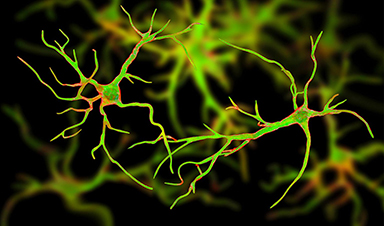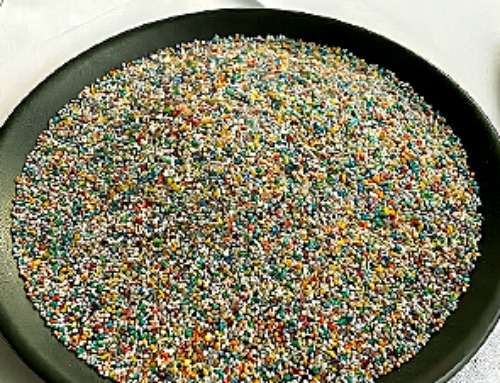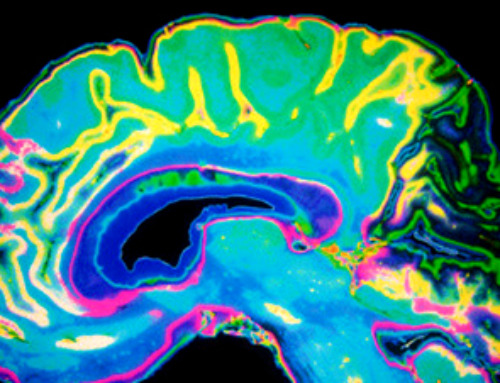Northwestern Medicine scientists have developed a more effective way of creating nanotherapeutic vaccines and medicines, according to a new study published in ACS Nano.
In the Mirkin laboratory, investigators have harnessed this SNA technology in their work to design precision nanomedicines for use in gene regulation and in cancer immunotherapy with limited unwanted side effects through a systematic development process known as rational vaccinology.
“In the development of vaccines, historically, very little attention has been paid to vaccine structure,” said Mirkin, who is also a member of the Robert H. Lurie Comprehensive Cancer Center of Northwestern University. “All of the emphasis has been on the components. The premise of rational vaccinology is that, while components are critical, structure is equally important. How you present vaccine components within a modular nanoscale architecture can have a dramatic impact on vaccine efficacy, whether it’s treating infectious disease or cancer.”
In the study, investigators first tested the effects of using different chemical anchoring groups to attach the oligonucleotides—short strands of DNA or RNA—to the surface of the liposomes to prepare SNAs. They found that when increasingly hydrophobic dodecane-based anchoring groups were used, the stability of the nanostructure was significantly improved. When introduced to bone marrow-derived dendritic cells from mice, these more stable SNA constructs exhibited improved cellular uptake compared to the other versions of SNAs that were prepared using other types of anchoring groups, with different chemistries.
“We discovered a way to anchor the oligonucleotides to the surface of the particle that changes the overall stability of the SNA construct, which is critical,” said Jasper Dittmar, a Ph.D. student in the Mirkin laboratory and a co-author of the study. “The beauty of the SNA architecture is that it’s recognized by almost all cell types, immune cells included, and rapidly internalized. You get the vaccine to enter the cells that matter at the stoichiometry you’d like, with the desired number of antigens and adjuvant molecules.”
Scientists in the Mirkin lab then loaded the SNA vaccine with OVA1 (a model peptide derived from egg protein often used in vaccine development) and administered that to mice with lymphoma. The OVA1 SNA-treated mice not only had a greater number of polyfunctional T-cells (which are considered potent against chronic infections and tumors), they also showed a 21-fold reduction in tumor volumes compared to saline-treated mice, according to the study.
To assess the inflammatory side effects of the vaccine, investigators then studied the SNA to see if it activated excessive immune responses in mice. Mice given the treatment did not produce a cytokine storm, a sometimes-fatal side effect of immunotherapies.
Because cytokine storms are associated with severe cases of COVID-19, Mirkin and his research team also created an SNA vaccine where the OVA1 peptide was swapped out for a peptide from the virus that causes COVID-19 (CoV peptide) and administered it to human cells and ultimately mice. The investigators found that the vaccine enhanced antigen-specific, anti-COVID immune responses with minimal adverse side effects.
“Taken together, the results of this study lay a foundation for a new way of developing and delivering vaccines and other precision treatments, regardless of the target disease,” said Michael Evangelopoulos, a Ph.D. student in the Mirkin lab and a co-author of the study.
The findings also highlight the importance of vaccine construction, Mirkin said.
“Structure matters,” Mirkin said. “In a field where we’ve spent very little time focused on the structure of vaccines, we have may have been missing the forest for the trees. It’s a combined understanding of the components and the structural presentation that leads to an efficacious medicine or not.”
Moving forward, the Mirkin group will continue to devise different configurations of SNA vaccines to assess which are the most effective, he said.
“We are spending a lot of time using the SNA platform to figure out the structures that are the most efficacious, and then trying to figure out why that is, what works and then also why it works,” Mirkin said. “We think that by doing that, we’ll be able to create a whole new generation of medicines based upon this concept of rational vaccinology.”
More information: Jasper W. Dittmar et al, Tuning DNA Dissociation from Spherical Nucleic Acids for Enhanced Immunostimulation, ACS Nano (2023). DOI: 10.1021/acsnano.3c04333
Journal information: ACS Nano
News
Researchers highlight five pathways through which microplastics can harm the brain
Microplastics could be fueling neurodegenerative diseases like Alzheimer's and Parkinson's, with a new study highlighting five ways microplastics can trigger inflammation and damage in the brain. More than 57 million people live with dementia, [...]
Tiny Metal Nanodots Obliterate Cancer Cells While Largely Sparing Healthy Tissue
Scientists have developed tiny metal-oxide particles that push cancer cells past their stress limits while sparing healthy tissue. An international team led by RMIT University has developed tiny particles called nanodots, crafted from a metallic compound, [...]
Gold Nanoclusters Could Supercharge Quantum Computers
Researchers found that gold “super atoms” can behave like the atoms in top-tier quantum systems—only far easier to scale. These tiny clusters can be customized at the molecular level, offering a powerful, tunable foundation [...]
A single shot of HPV vaccine may be enough to fight cervical cancer, study finds
WASHINGTON -- A single HPV vaccination appears just as effective as two doses at preventing the viral infection that causes cervical cancer, researchers reported Wednesday. HPV, or human papillomavirus, is very common and spread [...]
New technique overcomes technological barrier in 3D brain imaging
Scientists at the Swiss Light Source SLS have succeeded in mapping a piece of brain tissue in 3D at unprecedented resolution using X-rays, non-destructively. The breakthrough overcomes a long-standing technological barrier that had limited [...]
Scientists Uncover Hidden Blood Pattern in Long COVID
Researchers found persistent microclot and NET structures in Long COVID blood that may explain long-lasting symptoms. Researchers examining Long COVID have identified a structural connection between circulating microclots and neutrophil extracellular traps (NETs). The [...]
This Cellular Trick Helps Cancer Spread, but Could Also Stop It
Groups of normal cbiells can sense far into their surroundings, helping explain cancer cell migration. Understanding this ability could lead to new ways to limit tumor spread. The tale of the princess and the [...]
New mRNA therapy targets drug-resistant pneumonia
Bacteria that multiply on surfaces are a major headache in health care when they gain a foothold on, for example, implants or in catheters. Researchers at Chalmers University of Technology in Sweden have found [...]
Current Heart Health Guidelines Are Failing To Catch a Deadly Genetic Killer
New research reveals that standard screening misses most people with a common inherited cholesterol disorder. A Mayo Clinic study reports that current genetic screening guidelines overlook most people who have familial hypercholesterolemia, an inherited disorder that [...]
Scientists Identify the Evolutionary “Purpose” of Consciousness
Summary: Researchers at Ruhr University Bochum explore why consciousness evolved and why different species developed it in distinct ways. By comparing humans with birds, they show that complex awareness may arise through different neural architectures yet [...]
Novel mRNA therapy curbs antibiotic-resistant infections in preclinical lung models
Researchers at the Icahn School of Medicine at Mount Sinai and collaborators have reported early success with a novel mRNA-based therapy designed to combat antibiotic-resistant bacteria. The findings, published in Nature Biotechnology, show that in [...]
New skin-permeable polymer delivers insulin without needles
A breakthrough zwitterionic polymer slips through the skin’s toughest barriers, carrying insulin deep into tissue and normalizing blood sugar, offering patients a painless alternative to daily injections. A recent study published in the journal Nature examines [...]
Multifunctional Nanogels: A Breakthrough in Antibacterial Strategies
Antibiotic resistance is a growing concern - from human health to crop survival. A new study successfully uses nanogels to target and almost entirely inhibit the bacteria P. Aeruginosa. Recently published in Angewandte Chemie, the study [...]
Nanoflowers rejuvenate old and damaged human cells by replacing their mitochondria
Biomedical researchers at Texas A&M University may have discovered a way to stop or even reverse the decline of cellular energy production—a finding that could have revolutionary effects across medicine. Dr. Akhilesh K. Gaharwar [...]
The Stunning New Push to Protect the Invisible 99% of Life
Scientists worldwide have joined forces to build the first-ever roadmap for conserving Earth’s vast invisible majority—microbes. Their new IUCN Specialist Group reframes conservation by elevating microbial life to the same urgency as plants and [...]
Scientists Find a Way to Help the Brain Clear Alzheimer’s Plaques Naturally
Scientists have discovered that the brain may have a built-in way to fight Alzheimer’s. By activating a protein called Sox9, researchers were able to switch on star-shaped brain cells known as astrocytes and turn them into [...]





















